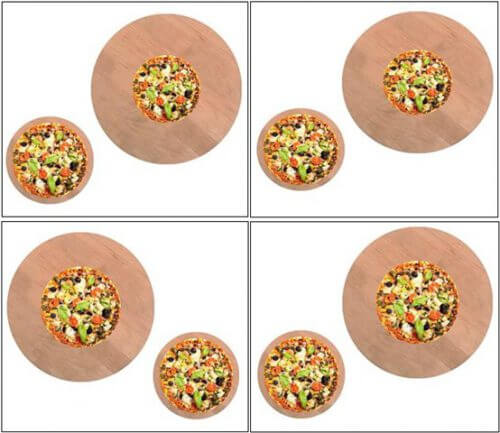A first-of-its-kind study examining how hunger affects the relative perception of food shatters one of the oldest diet myths

Serving food on a smaller plate in order to eat less is a trick that doesn't necessarily work, according to a new study by Ben-Gurion University of the Negev. The study found that when people are hungry, they tend to identify the size of their portion more accurately, and are less influenced by the way it is served.
The study published in the journal Appetite shatters the popular diet myth based on the Delboeuf illusion. This is an optical illusion based on the perception of relative size, whereby people will estimate the size of an object differently when it is placed inside a larger or smaller object. The classic experiment conducted on the subject showed that people perceive the same black circle as smaller when it is embedded in a larger circle than when it is placed in a smaller circle.
"The size of the plate doesn't really matter as much as we think," says Prof. Zvi Ganel, head of the laboratory for visual perception and action in the psychology department at Ben-Gurion University. "If you are hungry and haven't eaten, and try to reduce the portion, the food will look the same to you even if it fills the whole of a small plate or alternatively if it is placed in the center of a larger plate and surrounded by an empty ring."
This is one of the only studies that examined how hunger affects the perception of food size in different contexts. Prof. Ganel and doctoral student Noa Citron-Emanuel discovered that people who hadn't eaten for at least three hours tended to more accurately identify the exact size of pizzas placed on a larger or smaller tray than people who had recently eaten.
These were the results only when the experiment applied to food. Both groups showed equal inaccuracy when asked to compare the size of black circles and tire plates placed inside circles of different sizes. According to the researchers, this data indicates that hunger prompts people to grasp food in a more analytical processing way, which is not easily affected by perceptual illusions and optical illusions.
"In the last decade, restaurants and other food businesses are making more and more use of small plates and serving utensils to adapt to the popular notion that using them will also reduce food consumption," says Prof. Ganal. "This study challenges this idea. When people are hungry, especially while dieting, they are less likely to be fooled by the size of the plate. Also, it is possible that although they eat less now, they will eat later - more."

One response
There are no details regarding the scope and methodology of the study, so it is difficult to assess how valid it is.
In any case, people get fat mainly from eating that does not stem from real hunger - "emotional" eating, out of pressure or due to circumstances and social conventions, etc., when we are not really or truly hungry. It is likely that the Delboeuf illusion does work, and the size of the plate does matter. It is a shame that the research does not address this important aspect of the subject.